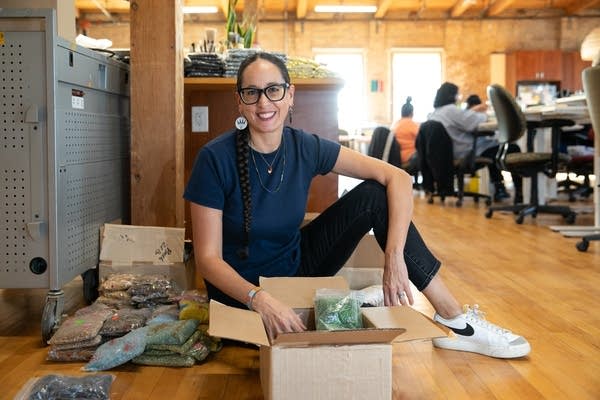Lakota artist Dyani White Hawk: A 2023 MacArthur 'genius' fellow

Dyani White Hawk in her studio at the Casket Arts building in northeast Minneapolis.
John D. and Catherine T. MacArthur Foundation
Go Deeper.
Create an account or log in to save stories.
Like this?
Thanks for liking this story! We have added it to a list of your favorite stories.



